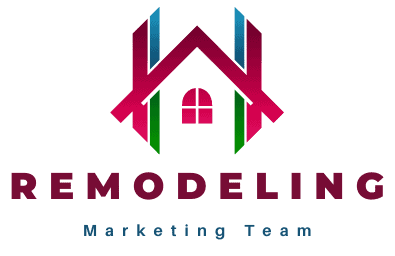- Introduction
- Key Takeaways
- The Power of Customer Testimonials in the Remodeling Industry
- Collecting and Curating Authentic Testimonials
- Effective Ways to Showcase Testimonials on Websites
- Leveraging Video Testimonials for Added Impact
- Amplifying the Reach of Testimonials Through Social Media and Other Channels
- Conclusion
- FAQs
- Why are customer testimonials important in the remodeling industry?
- How can I effectively collect customer testimonials?
- What makes a good customer testimonial?
- Where should I place testimonials on my website?
- What are the benefits of using video testimonials?
- How can I use testimonials in my social media and email marketing?
- What legal considerations should I keep in mind when using testimonials?
- How can testimonials be integrated into offline marketing efforts?
Introduction
In the remodeling industry, trust is the cornerstone of successful client relationships. Remodeling projects often involve significant financial investment and emotional attachment, making it essential for homeowners to trust the professionals they hire. In such a high-stakes environment, establishing credibility is not just important—it’s crucial. One of the most effective ways to build this credibility is through the strategic use of customer testimonials.
This article explores how remodeling businesses can collect, curate, and showcase authentic testimonials to enhance their marketing efforts. By the end, you’ll have a clear understanding of how to leverage testimonials to build trust and credibility, ultimately driving more leads and conversions for your business.
Key Takeaways
- Trust is Crucial in Remodeling: Building trust is essential in the remodeling industry, where clients often have significant emotional and financial investment in their projects. Customer testimonials are a powerful tool for establishing this trust.
- Effective Collection of Testimonials: Gather testimonials by asking clients at the right time—shortly after project completion—and approach them in a personal, direct manner. Authentic and specific testimonials are the most impactful, as they resonate deeply with potential clients.
- Strategic Display of Testimonials: Position testimonials strategically on your website, such as on the homepage, dedicated testimonials page, service pages, and landing pages. This placement reinforces credibility and helps convert visitors into leads.
- Enhance Engagement with Video Testimonials: Video testimonials add a personal touch and provide visual proof of your work, leading to higher engagement. They should be integrated across your website, social media platforms, and email campaigns.
- Amplify Reach Through Multiple Channels: Leverage social media, email marketing, review sites, and even offline channels like brochures and showroom displays to maximize the visibility and impact of your testimonials.
- Legal and Ethical Considerations: Always obtain explicit permission from clients before using their testimonials in your marketing materials, ensuring both trust and legal compliance.
- Comprehensive Marketing Strategy: Incorporating customer testimonials into your marketing strategy can significantly enhance your credibility, attract more clients, and drive business growth in the competitive remodeling industry.
The Power of Customer Testimonials in the Remodeling Industry
Why Trust Matters
When homeowners decide to remodel their homes, they are not just making a financial decision—they are investing in their dreams. However, the remodeling industry is filled with stories of projects gone wrong, from cost overruns to poor workmanship. This makes potential clients naturally cautious when choosing a contractor. Building trust from the outset is essential to overcoming this skepticism.
Testimonials as Social Proof
Social proof is a psychological phenomenon where people look to others’ actions and experiences to guide their own decisions. In the context of remodeling, testimonials serve as powerful social proof, providing potential clients with reassurance that others have had positive experiences with your services. When homeowners see that others have successfully navigated the remodeling process with your company, their confidence in choosing you increases.
Building an Emotional Connection
Testimonials help create an emotional bond with potential clients by allowing them to see their own needs and concerns reflected in others’ stories. Remodeling projects are deeply personal, and clients want to know that their contractor understands their vision and can deliver on it. Testimonials that capture a client’s journey—starting with their initial concerns and ending with their satisfaction—can resonate on a personal level, making prospects feel understood and valued.
Collecting and Curating Authentic Testimonials
Encouraging Testimonials
Collecting testimonials is the first step in leveraging them effectively. However, many satisfied clients may not think to provide a testimonial unless prompted. Knowing when and how to ask for one is key to gathering authentic and meaningful feedback.
- Timing: The best time to ask for a testimonial is shortly after a project has been completed, when the experience is fresh in the client’s mind. This is when clients are most likely to recall specific details about the process and express their satisfaction.
- Approach: How you ask for a testimonial can significantly impact the response. A personal, direct request—whether via a follow-up email, a thank-you note, or a phone call—can be very effective. It’s important to convey that their feedback is valuable not only to you but also to other potential clients.
- Incentivization: Offering incentives such as discounts or gift cards for testimonials can encourage participation, but it’s crucial to balance this approach carefully. Incentives can sometimes lead to less genuine feedback. The most compelling testimonials are those that clients give freely, without any perceived obligation.
What Makes a Good Testimonial?
Not all testimonials are equally effective. To maximize their impact, it’s important to guide clients on what to include in their feedback. The best testimonials are specific, authentic, and diverse.
- Specificity: Encourage clients to focus on particular aspects of their experience, such as communication, quality of work, or how you addressed challenges. A testimonial that mentions, “The team was always on time, communicated clearly, and made sure every detail was perfect,” is far more impactful than a generic statement like, “Great job.”
- Authenticity: Authenticity is critical. Testimonials should reflect the genuine experiences of your clients. Avoid overly polished or edited testimonials, as they can come across as insincere. Real, relatable stories resonate more with potential clients.
- Diversity: Aim to collect testimonials from a variety of clients to showcase the full range of your services. This could include different types of remodeling projects (e.g., kitchens, bathrooms, outdoor spaces) and clients from various backgrounds. A diverse set of testimonials demonstrates your ability to meet the needs of a wide array of clients.
Curating Testimonials
After collecting testimonials, the next step is curating them for use in your marketing materials.
- Editing for Clarity: Ensure that testimonials are clear and easy to read. This might involve light editing for grammar or removing unnecessary details, but it’s important not to alter the original sentiment.
- Permission and Legal Considerations: Always obtain explicit permission from clients before using their testimonials in your marketing. This not only builds trust but also protects you legally. Depending on your location, you may need to adhere to specific regulations regarding the use of testimonials in advertising.
Effective Ways to Showcase Testimonials on Websites
Strategic Placement
Where you place testimonials on your website can significantly influence their effectiveness. Here are some strategic placements to consider:
- Homepage: The homepage is often the first point of contact for potential clients. Placing testimonials here, especially near calls to action (CTAs), can reinforce your credibility at a critical decision-making moment.
- Dedicated Testimonials Page: While testimonials scattered throughout your site are valuable, having a dedicated page allows potential clients to explore them in depth. This page can serve as a comprehensive repository of your best testimonials, giving visitors confidence in your capabilities.
- Service Pages: Embedding relevant testimonials directly on service-specific pages adds context and reinforces your expertise in that particular area. For example, a glowing review of a bathroom remodel would be most effective on your bathroom remodeling service page.
- Landing Pages: For specific marketing campaigns, including testimonials on landing pages can boost conversion rates. When prospects arrive on a landing page, seeing positive feedback from others who have taken the same action can help nudge them toward contacting you.
Design Considerations
The way you present testimonials on your website can enhance their impact.
- Visual Appeal: Use clean, readable fonts, and consider incorporating client photos or images of completed projects alongside their testimonials. This not only makes the testimonials more engaging but also adds a layer of authenticity.
- Interactive Elements: Adding interactive elements like sliders or scrolling text can make testimonials more dynamic. This approach keeps visitors engaged as they explore different client experiences.
- Categorization: Organize testimonials by project type, service, or client type. This allows visitors to find testimonials that are most relevant to their needs quickly and easily.
Case Studies
In some cases, a simple testimonial might not fully capture the value you provided. This is where case studies come in.
- Deep-Dive Testimonials: Turn particularly detailed testimonials into full case studies that explore the project from start to finish. Include the client’s initial concerns, the solutions you provided, and the final results. This format allows potential clients to see the depth of your work and how you solve problems.
- Visual Storytelling: Combine testimonials with before-and-after photos or project videos to create a compelling visual narrative. This approach not only tells but also shows the impact of your work, making it more relatable and convincing.
Leveraging Video Testimonials for Added Impact
The Rise of Video Content
In today’s digital age, video content is increasingly important. Videos are highly engaging and can convey complex messages quickly and effectively. When it comes to testimonials, video can be especially powerful, allowing clients to express their satisfaction in their own words and tone.
Advantages of Video Testimonials
- Personal Connection: Video testimonials add a personal touch, allowing potential clients to hear directly from your satisfied customers. Seeing and hearing a real person talk about their positive experience can be much more convincing than reading text alone.
- Visual Proof: Videos can also show off your completed projects in a way that text cannot. A video testimonial might include shots of the finished remodel, providing visual proof of the quality of your work.
- Higher Engagement: Video content tends to have higher engagement rates on websites and social media platforms. Visitors are more likely to watch a short video than to read a long block of text.
How to Create Effective Video Testimonials
Creating effective video testimonials requires a bit more planning and effort than collecting written testimonials, but the results can be well worth it.
- Guiding the Client: Help clients feel comfortable on camera by providing them with a few guiding questions or topics to cover. Encourage them to speak naturally about their experience and highlight specific aspects of the project.
- Professional vs. DIY: Depending on your budget and needs, you might choose to hire a professional videographer or create DIY videos using a smartphone or camera. Professional videos offer higher production quality, but DIY videos can still be effective if done well.
- Editing and Post-Production: After filming, edit the video to keep it concise (1-2 minutes is ideal). Add subtitles for accessibility, and consider including background music or graphics to enhance the presentation.
Where to Showcase Video Testimonials
- Website Integration: Embed video testimonials on key pages like the homepage, testimonials page, and service pages. Videos placed in these strategic locations can significantly enhance the credibility of your site.
- Social Media Platforms: Share video testimonials on platforms like Facebook, Instagram, and LinkedIn. Social media is a great way to reach a broader audience and drive traffic back to your website.
- YouTube Channel: Create a YouTube playlist dedicated to customer testimonials. You can easily share this playlist across other platforms and even embed it on your website.
- Email Marketing: Include video testimonials in your email campaigns to nurture leads. A well-placed video can make your emails more engaging and increase click-through rates.
Amplifying the Reach of Testimonials Through Social Media and Other Channels
Social Media Strategies
Social media offers powerful tools for amplifying the reach of your testimonials.
- Sharing Snippets: Post short excerpts of testimonials on social media, accompanied by a link to the full testimonial or project page on your website. This approach teases the full story and drives traffic to your site.
- Visual Testimonials: Create graphics that feature quotes from your testimonials. Share these visuals on platforms like Instagram and Pinterest, where visually engaging content performs well.
- Testimonial Ads: Consider running paid ads that highlight your best testimonials. Platforms like Facebook and Instagram allow you to target specific demographics, making your testimonial ads highly effective in reaching your ideal audience.
Email Marketing Integration
- Incorporating Testimonials in Newsletters: Regular newsletters are a great way to stay top-of-mind with your audience. Including testimonials in these emails reinforces the value of your services.
- Segmented Campaigns: Tailor testimonials to specific segments of your email list. For example, if a segment of your list is interested in kitchen remodels, include a testimonial from a satisfied kitchen remodeling client.
Google My Business and Review Sites
- Encouraging Public Reviews: Encourage satisfied clients to leave reviews on platforms like Google My Business, Yelp, and Houzz. Positive reviews on these platforms can significantly impact your local search rankings and credibility.
- Responding to Reviews: Engaging with reviews—both positive and negative—demonstrates that you value customer feedback. Responding to reviews promptly and professionally can also help build trust with potential clients.
Offline Channels
- Printed Materials: Don’t forget about offline marketing. Incorporate testimonials into brochures, flyers, and direct mail campaigns to reach potential clients who prefer physical media.
- Showroom Displays: If you have a showroom, use it to showcase testimonials. Display client feedback alongside photos of completed projects to create a powerful visual and emotional impact.
Conclusion
Customer testimonials are a powerful tool for building trust and credibility in the remodeling industry. By collecting authentic testimonials, curating them effectively, and showcasing them strategically, you can significantly enhance your marketing efforts and attract more clients to your business.
Ready to harness the power of customer testimonials to build trust and grow your remodeling business? Schedule a free strategy session with the Remodeling Marketing Team today. We’ll work with you to develop a customized testimonial marketing plan that aligns with your business goals and helps you stand out in the competitive remodeling industry. Don’t wait—book your session now and start converting satisfied customers into powerful advocates for your brand.
FAQs
Why are customer testimonials important in the remodeling industry?
Customer testimonials are crucial in the remodeling industry because they help build trust and credibility. Remodeling projects often involve significant financial and emotional investments, and potential clients are naturally cautious when choosing a contractor. Testimonials serve as social proof, reassuring prospective clients that others have had positive experiences with your services, which can influence their decision to choose your company.
How can I effectively collect customer testimonials?
To effectively collect customer testimonials, ask for them at the right time—ideally, shortly after a project is completed when the experience is still fresh in the client’s mind. Approach clients personally and directly, either through a follow-up email, a thank-you note, or a phone call. Be clear about the value of their feedback, both to you and to future clients. You can also encourage testimonials by offering incentives, though it’s important to ensure that the testimonials remain genuine.
What makes a good customer testimonial?
A good customer testimonial is specific, authentic, and relevant. Specificity means the client mentions particular aspects of the project, such as communication, quality of work, or how challenges were handled. Authenticity ensures the testimonial reflects the client’s genuine experience without being overly polished or edited. Diverse testimonials from different types of projects and clients add depth and showcase your ability to meet a variety of client needs.
Where should I place testimonials on my website?
Testimonials should be strategically placed across your website for maximum impact. Key locations include the homepage, where they can reinforce credibility; a dedicated testimonials page for in-depth exploration; service-specific pages, where relevant testimonials can support your expertise; and landing pages, where testimonials can help increase conversion rates.
What are the benefits of using video testimonials?
Video testimonials offer several benefits, including a stronger personal connection with potential clients and visual proof of your work. Videos are more engaging than text alone and tend to have higher engagement rates on websites and social media. They allow clients to express their satisfaction in their own words and tone, making the testimonial more relatable and convincing.
How can I use testimonials in my social media and email marketing?
You can amplify the reach of testimonials by sharing them across your social media platforms. Post short excerpts with links to the full testimonial on your website, create visually appealing graphics with testimonial quotes, and consider running testimonial ads targeted at specific demographics. In email marketing, include testimonials in newsletters and segmented campaigns to reinforce your services’ value and nurture leads.
What legal considerations should I keep in mind when using testimonials?
It’s important to obtain explicit permission from clients before using their testimonials in your marketing materials. This protects you legally and helps build trust with your clients. Depending on your location, there may be specific regulations regarding the use of testimonials in advertising, so it’s essential to ensure compliance.
How can testimonials be integrated into offline marketing efforts?
Testimonials can be effectively integrated into offline marketing by incorporating them into brochures, flyers, direct mail campaigns, and showroom displays. For example, you can display client feedback alongside photos of completed projects in your showroom to create a powerful visual and emotional impact on potential clients visiting in person.
This article is a collaboration between Carl Willis and OpenAI’s ChatGPT. Created on August 23, 2024, it combines AI-generated draft material with Willis’s expert revision and oversight, ensuring accuracy and relevance while addressing any AI limitations.






